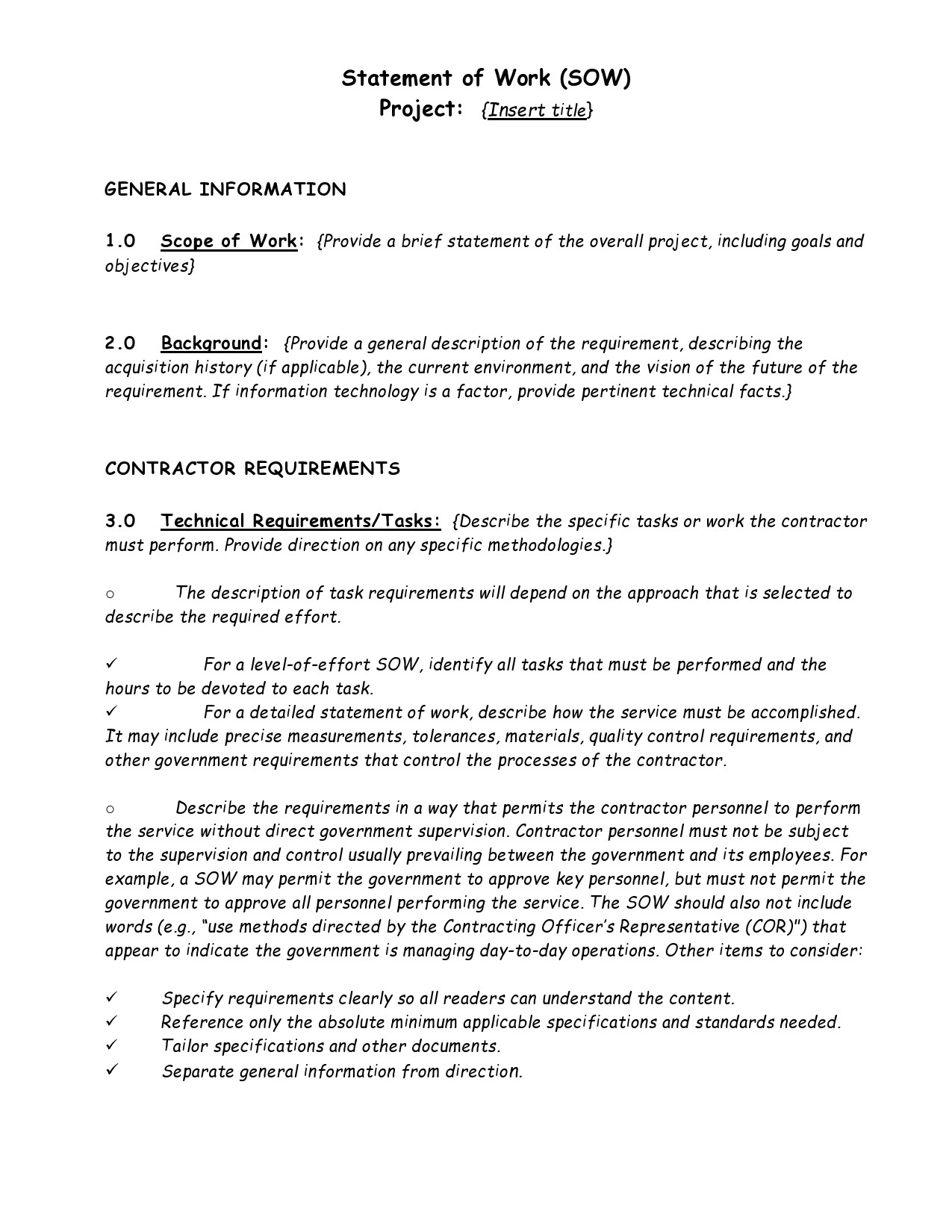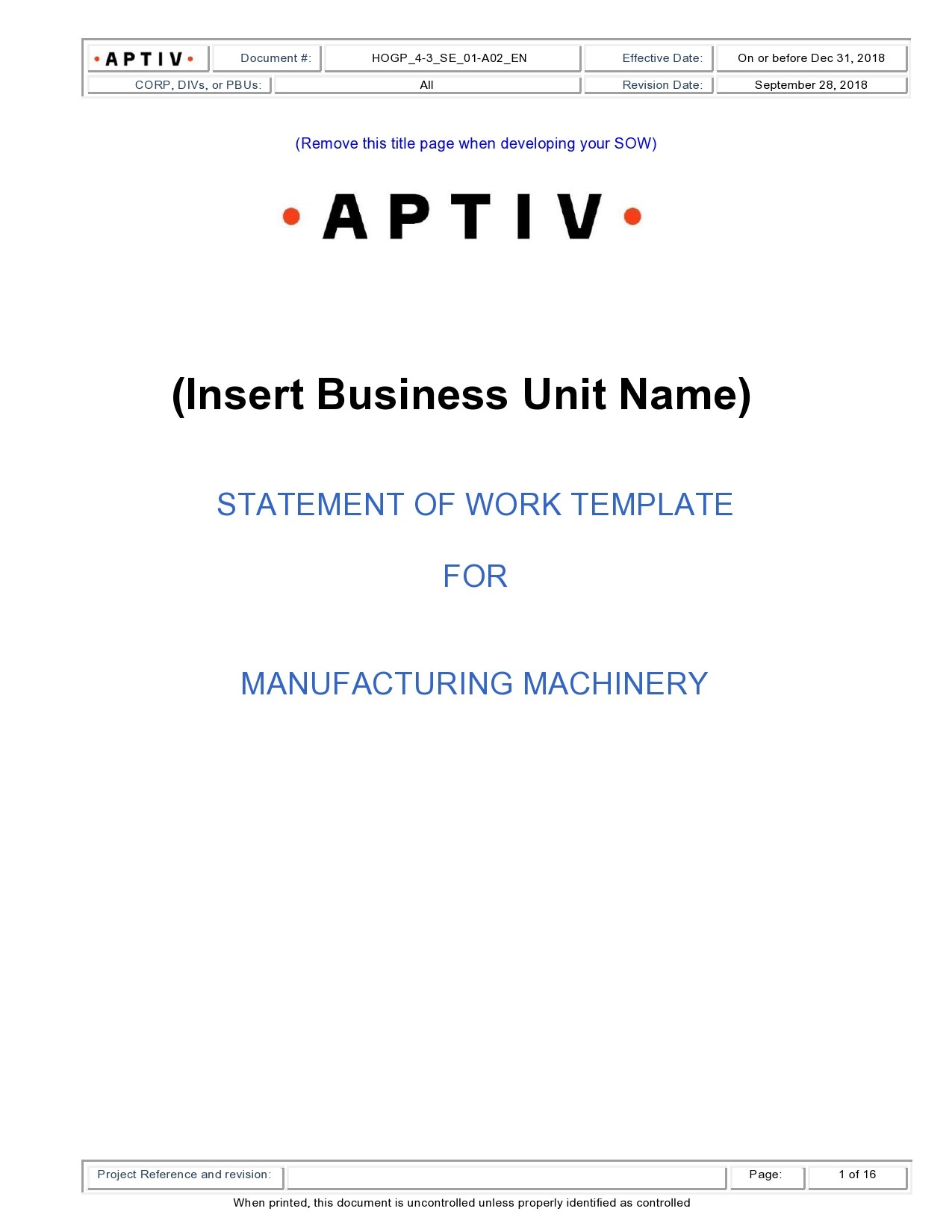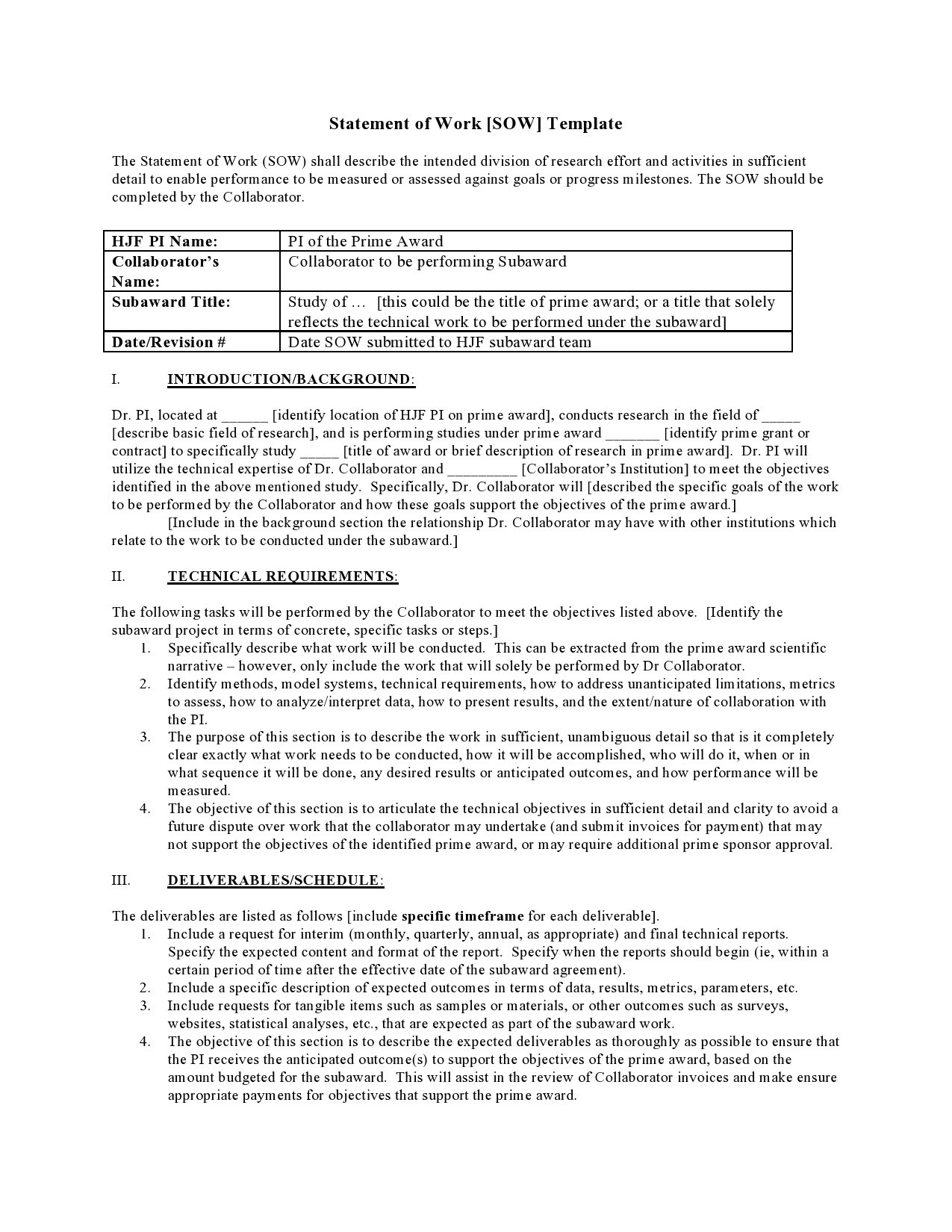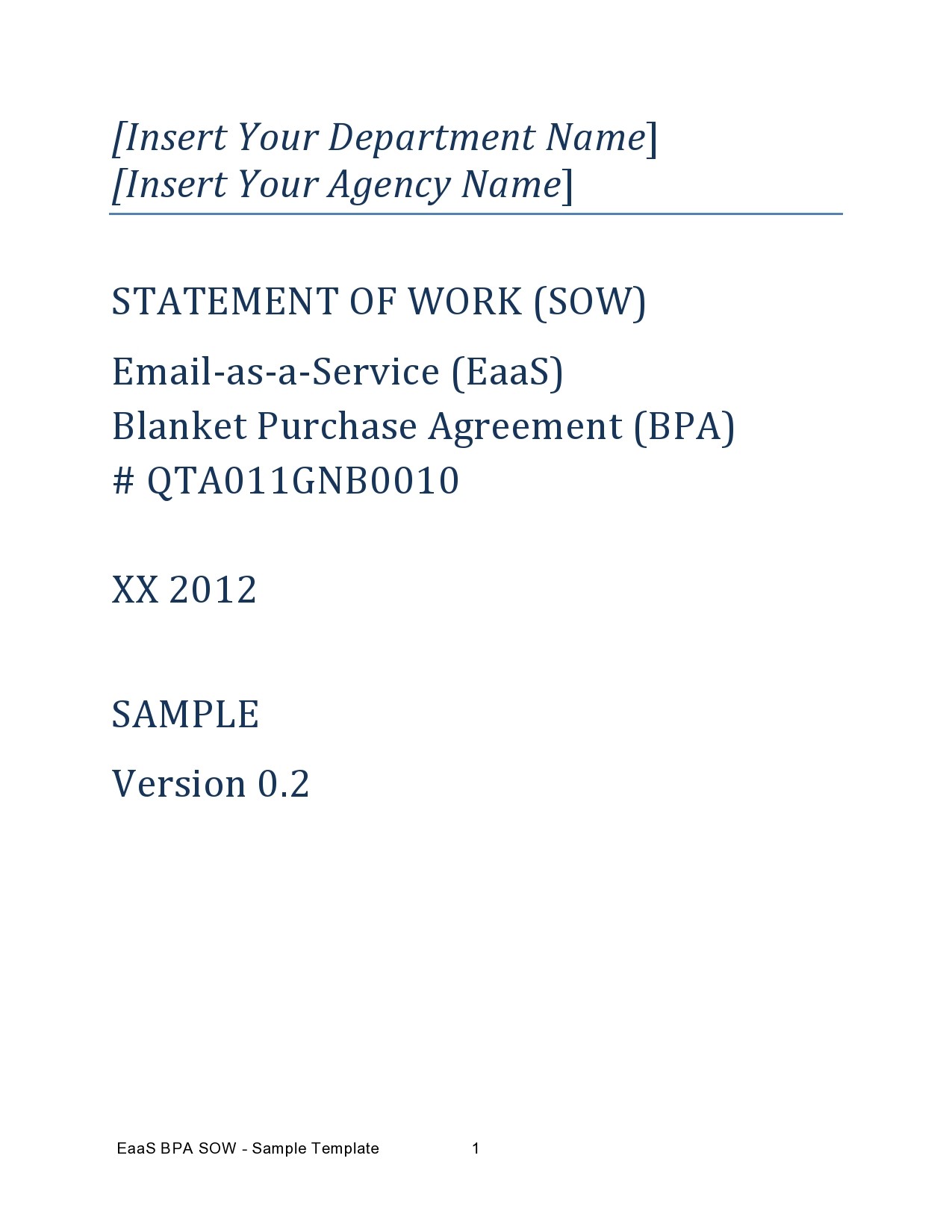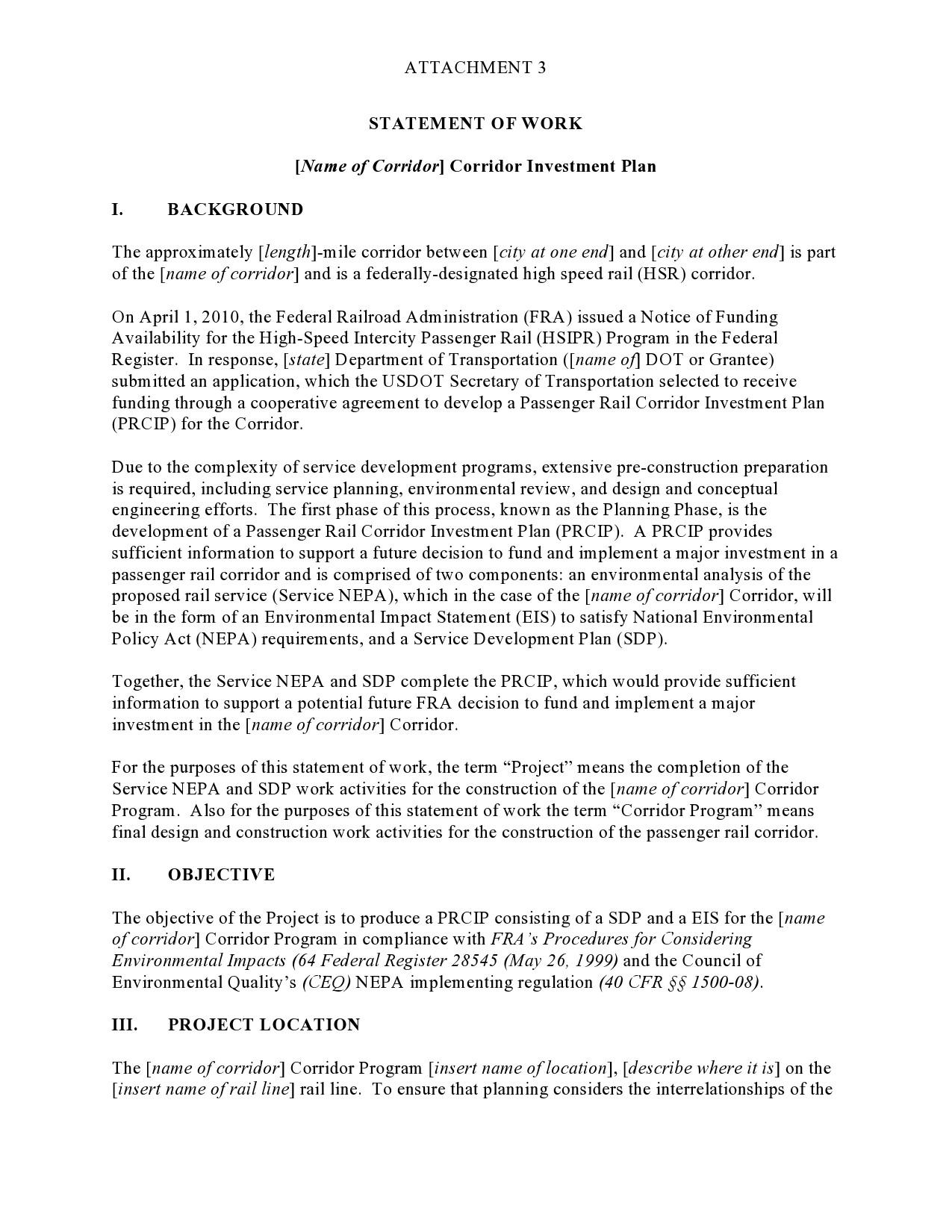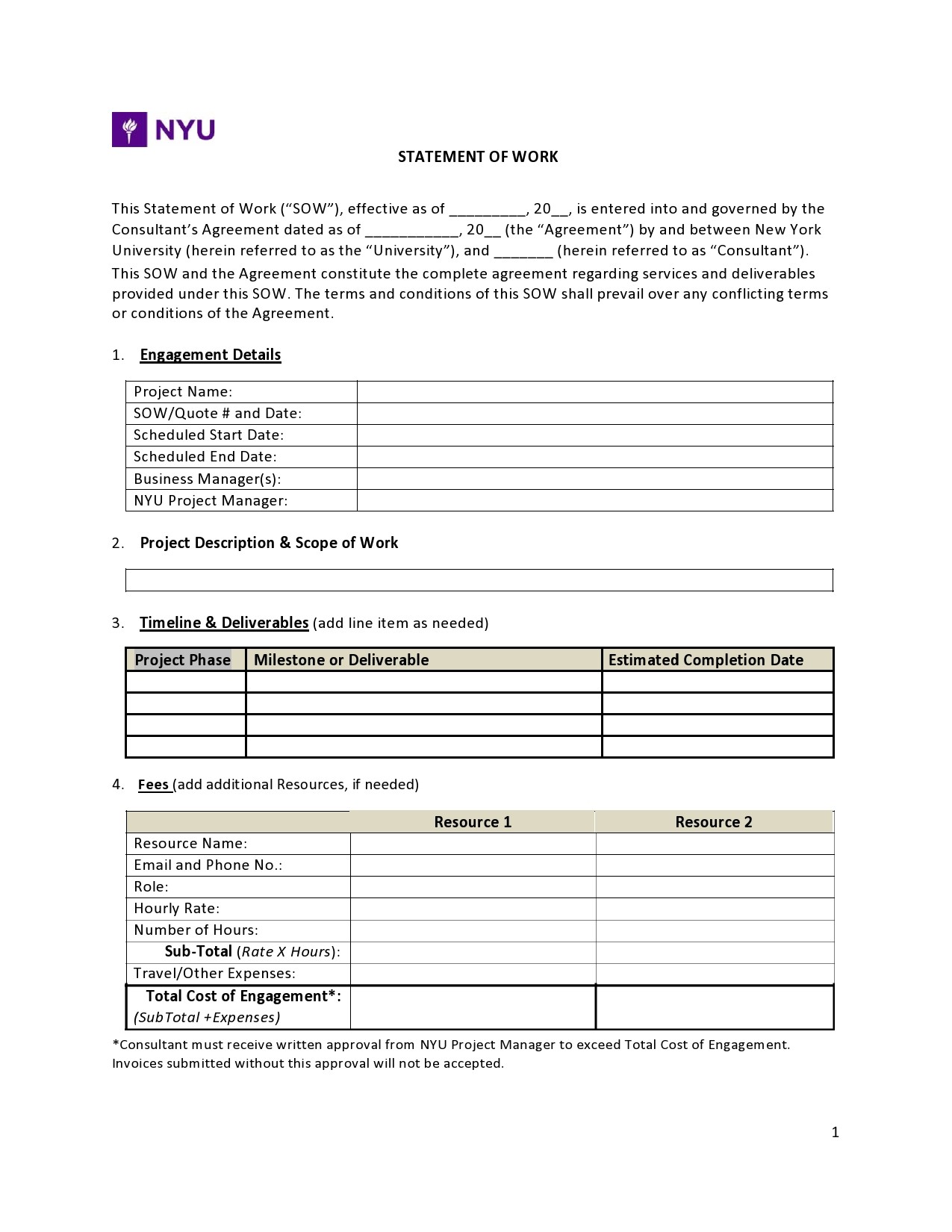A statement of work template is one of the most useful tools that you as a project manager have at your disposal. This document can save you from a lot of trouble. Unfortunately, it could also be your worst enemy because it entails a lot of hard work to create and even a small mistake in its development can have huge repercussions.
Table of Contents
Statement of Work Templates
What is a statement of work template?
A statement of work template agreed-upon between an agency and a client clearly defines what work to include within a project and what isn’t part of it. In itself, an SoW template is a project contract that establishes and aligns the expectations for both parties.
It contains details that make such alignments and may include details around processes, deliveries, and more. You can even include all types of details in of work example if you want, but it’s recommended to keep it as simple as you can.
Statement Of Work Examples
Statement of work template types
There are three categories of SOW templates, some of which are more commonly used than others depending on the industry. These are:
- Design or Detail SoW
This category informs the contractor, supplier or vendor exactly how to perform the work along with the processes to follow. The SoW defines the requirements of the client, buyer or entity clearly, whether these are measurements, materials, requirements for quality control, and more. This type is generally used in government contracts where the contractors must strictly follow specific rules.
This simple statement of work template is also popular among construction and manufacturing projects. The client, buyer or entity in this SOW assumes most of the risks since the contractor must follow the regulations given to them. - Level of Effort or Time and Materials or Unit Rate SoW
One of the main features of this statement of work template is its flexibility. It’s commonly used for service workers paid hourly. The main concept of this SoW is that it’s based simply on working hours and the materials needed to do the work.
It usually provides a description of the service needed over a set amount of time. This SoW is typically used for contract or temporary workers and for delivery of order contracts. - Performance-Based SoW
You can find the application of this SoW in most government entities and it is also the Standard SoW for most government procurement services in Canada and the US. The SoW covers the project’s purpose, the equipment and resources provided, and the measurable end results.
It does not, however, have any provisions on how the contractor should perform the job. This means that this SoW is very flexible in terms of how the contractor goes about the project.
As such, this category places more accountability on the supplier or the contractor since they’re responsible for delivering results using the methods that they think will be most effective.
SoW Templates
What should a statement of work include?
A statement of work template entails a lot of hard work in its creation. It is a comprehensive document and how detailed it can become depends on the kind of project to accomplish. Nevertheless, most projects share some basic fundamentals which include the following elements:
- Introduction
The start of the SoW speaks in general terms. It explains what the project is, the people involved, the project manager, and so on. - Background
This section provides a short background of the project and provides a short explanation about the organization and its needs that led to the development of the statement of work example. - Purpose
Start with a purpose statement, followed by answering basic questions to provide more details about the project. - Location
State here the location where the project will take place. Include the kinds of equipment or software to use. - Schedule
This contains a list of deliverables that specifically focuses on the deadlines and the individuals responsible for their completion. It includes all of the phases from start to finish. - Deliverables
This is a detailed listing of deliverables and their deadlines. - Milestones
The SoW should define the timeframe of the project from start to finish including all the deadlines of each stage. Using milestones is a great way of dividing the project into easy-to-accomplish parts. - Tasks
You break down the SoW from general steps to more specific and actionable tasks. Be very specific in doing this so no items get overlooked. You can also plan more broadly by categorizing those tasks into phases and milestones. - Plan for communication and reporting
There should be a system in place that monitors and reports on the progress of the project, as well as, a means of communication to contact team members and stakeholders effectively. - Standards and testing
If the project gets subjected to any kind of standards that it must follow, you should list these in this section. The same thing goes for any required testing, who will administer the tests, what is are the processes and other details. - Define success
Your project’s stockholders or sponsors have to define this part of the project. - Requirements
It is in this section where you gather any degrees, travel time, certifications, equipment, and other requirements needed for the project that you haven’t listed yet. - Payment
This section specifies the payments related to your project and their mode of delivery. - Other
Mention in this section anything that you haven’t covered in the other sections like restrictions, security issues post-project support, and so on. - Closure
Make notes on how to accept the project deliverables. This may include who will deliver, check, and sign for them, and more. Make sure that all relevant documents get approved.
How do you write a work statement?
One of the most important things that an organization can do is to write an effective statement of work example because it is often the first deliverable item that a client sees and because it’s the SoW template that tells your story.
A simple statement of work template starts and deals with the “why,” then moves on to the “what” and “how,” followed by the “how much” and “when.” All the elements of a statement of work should have a cohesive flow so that it’s easy to understand and follow. Here are a few tips to consider when writing an SoW:
- Start by writing your objectives
This defines the “why” of your project. It is in this section where you state your business or marketing goals by presenting a high-level view of the project’s solution. Defining the goal gives clarity as to why you need to do the work and from there, you start weaving your story. - Create an outline of the scope along with deliverables and assumptions
This defines the “what” and “how” of the story. An outline of the scope defines the work you need to do and the processes involved. This section represents your task list and, therefore, you should write it in process form.
Assumptions are the most significant part of a simple statement of work template. Include any assumptions you have made while in the process of estimating and scoping your project. Include these assumptions in-line with the tasks. Also, clearly state what deliverables to produce including the details that describe each of the deliverables accurately. - Come up with a schedule
This defines the “when.” This section should provide a comprehensive schedule of the project. The format isn’t that important since you can easily present this in table form. Another way of doing this is by using get-and-paste images straight from the Microsoft Project into your document. The information should include your project’s end date. As for the start dates of the tasks, you may or may not include them. - Establish the price
This defines the “how much” of your project. In this section, you need to specify the price of the project including inclusive of everything involved in it. - List the key assumptions
Any assumptions that you didn’t include in the other sections go here. You should have already included any scope-related assumptions in the scope section. Avoid repeating assumptions as this could lead to mistakes. Instead, use this part of the SoW to document any general assumptions that you haven’t started yet. - Acceptance
Finally, you have this section which contains the client’s signature from the agency’s key executives responsible for project management. Never start a project without the client’s signature as this might lead to problems. If you have any exceptions, just ensure that the agency management team agrees with them.
Remember that they are the ones taking a significant risk should you start with the signature. Furthermore, should you get audited, the auditors will check to make sure that you have obtained all signatures.
Work Statements
What is the difference between MSA and SoW?
You may encounter the MSA acronym which you shouldn’t confuse with an SoW. To put it simply, the Master Services Agreement/Statement of Work format is a method of using documents for creating contractual agreements between two parties. Here is the difference between an MSA and a SoW:
- The MSA outlines legal terms and other rules between two parties whereas the SoW outlines project-specific deal terms like the descriptions of the services, payment terms, and more.
- An MSA can have a single SoW or it can have several SoWs attached to it.




